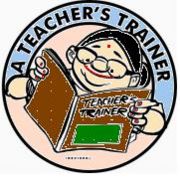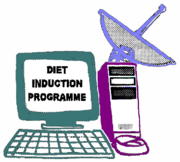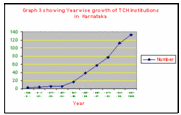Diet roles and functions
CONTENTS
DIET/CTE ROLES AND FUNCTIONS
This section has been titled as DIET/CTE ROLES AND FUNCTIONS because the DIET Principal's,Sr lecturer's and lecturer's roles and functions are also the functions of the DIETs. Secondly, though our concern is with the roles of individuals, they are understood better in the context of the institution in which these roles are performed.
|
This section of the programme is aimed at
|
THE ESTABLISHMENT OF DIETs/CTEs
Universalisation of elementary education and eradication of adult illiteracy were two important objectives of post-independent India. Though as a result of constructive efforts the literacy percentage 16.7% in 1961 raised to 52.11% in 1991, and 61% in 2007, the dream of complete literacy has remained only a dream. (Could present a graph and ask them to interpret/Read an article and Conclude)
The difference in literacy rates between male and female, rural and urban, advantaged and disadvantaged groups are quite alarming even today. The gaps are more than 20%.
In universalisation of elementary education, universal enrolment, universal attendance and universal attainment are the three challenges. Efforts are made under DPEP and SSA to ensure the first two, yet we are unable to improve the quality of elementary education. In view of this, the Government of India introduced Minimum Levels of Learning programme to raise the learning levels of children and ensure an equitable quality across different contexts of schooling.
To fulfill these basic requirements of elementary education, we need responsible teachers who can serve the cause more judiciously. To keep elementary teachers more active through continuous training, giving opportunity for continuing their education for the enhancement of their professional competencies. National and state level institutions like NCERT, NIEPA, DSERT etc. exist to cater to the needs of our elementary education. But, India as a geographically huge nation needs decentralisation.
Recent years have witnessed an enormous growth in elementary schools and adult education centers. This lead to the establishment of district level institutions to meet immediate needs of the teachers. Thus District Institutions of Education and Training (DIETs) have been setup in each district and Coollege of Teacher Education (CTE) in identified places.
The DIETs/CTEs have been established with all the required infrastructural facilities so as to meet the pre-service and inservice training needs and other requirements of primary education functionaries. Often, DIET is seen as an agency linking primary and secondary school system too.
|
Read this writeup on DIET |
| Send the Completed Activity Sheet to:
your online facilitator and mark a copy to kumaraswamy64@gmail.com ,dietvishu@hotmail.com dakshayinisadpi@gmail.com |
|
THE STRUCTURE OF A DIET
The DIETs have been established by upgrading erstwhile teacher training institutions in each district.DIETs which have been established with a Mission of “Providing academic and resource support (vide para 1.5) at the grass-roots level for the success of the various strategies and programmes being undertaken in the areas of elementary and adult education.
The structure of these new establishments has been evoloved considering the functions of the DIETs. You are aware that the structure of a DIET is visualized as consisting of the following seven wings.
(Diagram)
Lab Area
- [2]The Lab Area Approach of District Institutes of Education and Training
- [3]Lab area activities-Shimoga
|
What has been presented in this section may be summarised as follows:
|
| Send the Completed Activity Sheet to:
your online facilitator and mark a copy to kumaraswamy64@gmail.com, dietvishu@hotmail.com, dakshayinisadpi@gmail.com |
|





